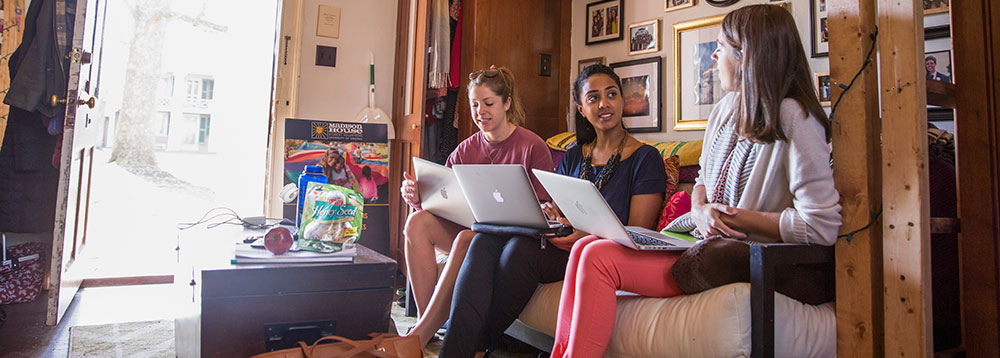
During the spring semester of 2016, Curry PhD candidate Nora Arkin conducted surveys and interviews to evaluate the effectiveness of the Body Project, an eating disorders prevention intervention used in the Women’s Center’s Body Positive Program. Nora’s soon to be presented findings from her research verify the Body Project’s positive impact on undergraduate women at UVA.
The Body Project is offered through sessions in which participants engage in group activities that provide them with opportunities to critique the thin ideal, a prevailing notion that emphasizes being thin as essential to being beautiful.
The Body Project uses the act of critiquing the thin ideal to generate cognitive dissonance which then reduces the degree to which participants internalize that ideal and engage in unhealthy behaviors aimed at controlling weight. The key to this intervention is that holding onto an ideal you have criticized out loud to others becomes uncomfortable. As participants choose to articulate reasons that the thin ideal is unattainable, it becomes more unlikely that they will continue maintaining that ideal as something that influences their feelings about their bodies and related choices about eating and exercise.
Nora studied a group of 56 Body Project participants and evaluated the intervention’s impact on them using four measures that have been established by prior research: thin-ideal internalization, body dissatisfaction, fat talk, and dieting. Participants showed significant change in the desired direction. Thin-ideal internalization and dieting were reduced and body satisfaction increased to degrees that were all significant. One type of fat talk significantly reduced while another type did not change significantly.
 Nora Arkin, 2016 Curry PhD candidate and Body Project researcher.
Nora Arkin, 2016 Curry PhD candidate and Body Project researcher.In addition to the analysis of these four measures, interviews with participants produced information about specific Body Project activities that they identified as important in their experience of the intervention. The specific activities of the intervention that they highlighted as helpful were: naming the thin ideal, writing letters to a younger girl, listing the costs of the thin ideal, practicing ways to respond in situations where fat talk arises, and completing assignments such as looking at themselves in the mirror or trying new activities outside of their comfort zone.
Key themes that many participants mentioned in discussing their experience of the Body Project included appreciation of the group experience, desire to be an agent of change, gaining words for experiences, sadness or empathy for women or younger girls struggling with body image, and difficulty resolving the intervention information with continued pressures around body image.
Finally, Nora reported on participants’ recommendations for enhancing future sessions of the Body Project. Participants expressed a desire for the Body Project to reach more people including the suggestion that it could be especially beneficial for first year students at UVA. They also connected value they found in experiencing this growth opportunity in a group setting to possible additional sessions in the future that would maintain a Body Project group’s mutual appreciation and support.
For further information about the scales used and results analyzed in this evaluation of the Body Project, you can read the full report here. Scripts and other materials used in the Body Project can be found at bodyprojectsupport.org.

